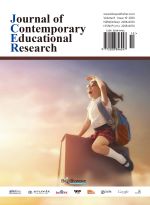Abstract
The New Curriculum Standard (NCS) is the norm and quality requirement of the Chinese national educational curriculum as well as the basis of teaching management, curriculum evaluation, and textbook compilation. In textbook design, the selection of textbook materials should meet the objectives and requirements of the NCS. Since appropriate teaching materials are essential to curriculum standards and effective teaching, we must follow the consistency between textbook materials and curriculum standards to achieve an ideal degree of conformity with the textbook system and teaching objectives and promote the sustainable development of the English curriculum reform. However, the current primary school English textbooks fall short of the NCS, which leads to difficulties in implementing teaching tasks and achieving teaching goals. Given these difficulties, we should analyze the causes from three dimensions: linguistic knowledge, cultural awareness, and learning strategies. In addition, a high recurrence of phonetic knowledge, systematic grammar presentation, diversified learning styles, level grading, and in-depth involvement of cultural factors are keys to the perfect conformity of the NCS and English textbooks.
References
Deng H, 2013, Research on the Current Status, Problems and Countermeasures of Textbook Diversification in the Elementary and Secondary School—Based on the Comparison of the Current Three Sets of Elementary English Textbooks, dissertation, Hunan Normal University.
Hu Z, 2013, The Research on the Congurity between Junior Schools’s English Textbooks and Curriculum Standard, dissertation, Minnan Normal University.
Ministry of Education of the People’s Republic of China, 2011, Full-Time Compulsory Education English Curriculum Standard, Beijing Normal University, Beijing.
Zhang Z, 2007, Anthology on English Language Education, Foreign Language Teaching and Research, Beijing.
Clark U, 2011, What is English for? Language Structure and the Curriculum for English. Changging English, 2011(3): 287–296.
Atai MR, 2013, English Language Teaching Curriculum in Iran: Planning and Practice. The Curriculum Journal, 2013(3): 389–411.
Tina I, 2014, Curriculum and Assessment Reform Gone Wrong: The Perfect Storm of GCSE English. The Curriculum Journal, 2014(1): 130–147.
Veli B, Senel E, 2016, Analysis of High School English Curriculum Materials through Rasch Measurement Model and Maxqda. Educational Sciences, 2016(4): 1325–1347.
Hu J, Wang F, 2001, Research on the Method of Testing the Difference in Teaching Effectiveness of Different English Textbooks. Research in Teaching, 2001(2): 114–116.
Cervettia GN, Kulikowich JM, 2015, The Effects of Educative Curriculum Materials on Teachers’ Use of Instructional Strategies for English Language Learners in Science and on Student Learning. Contemporary Educational Psychology, (2015): 86–98.
